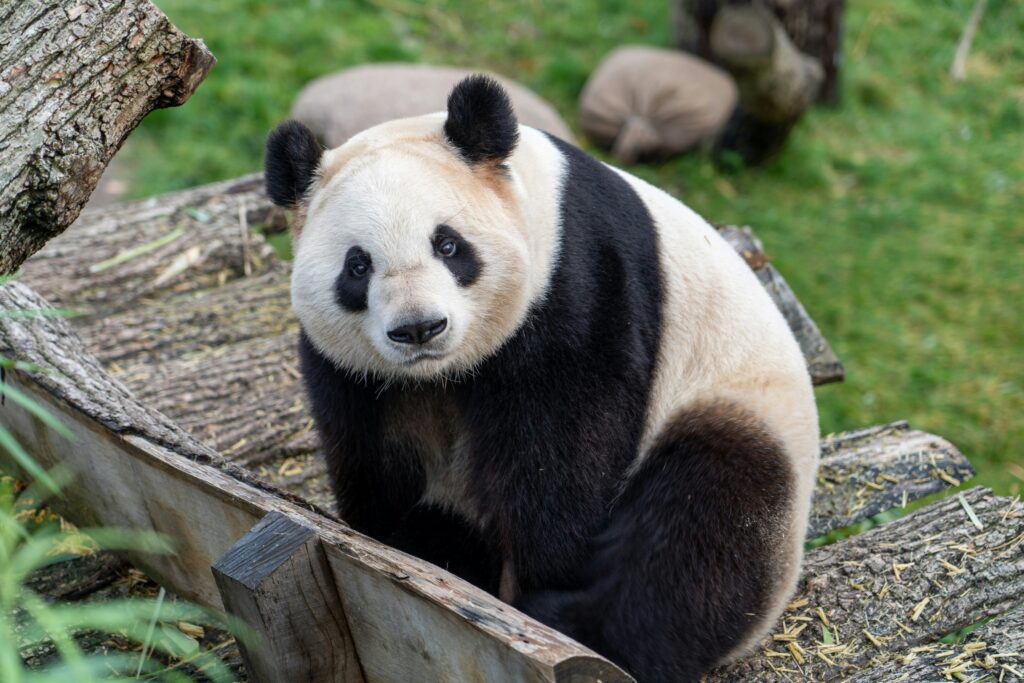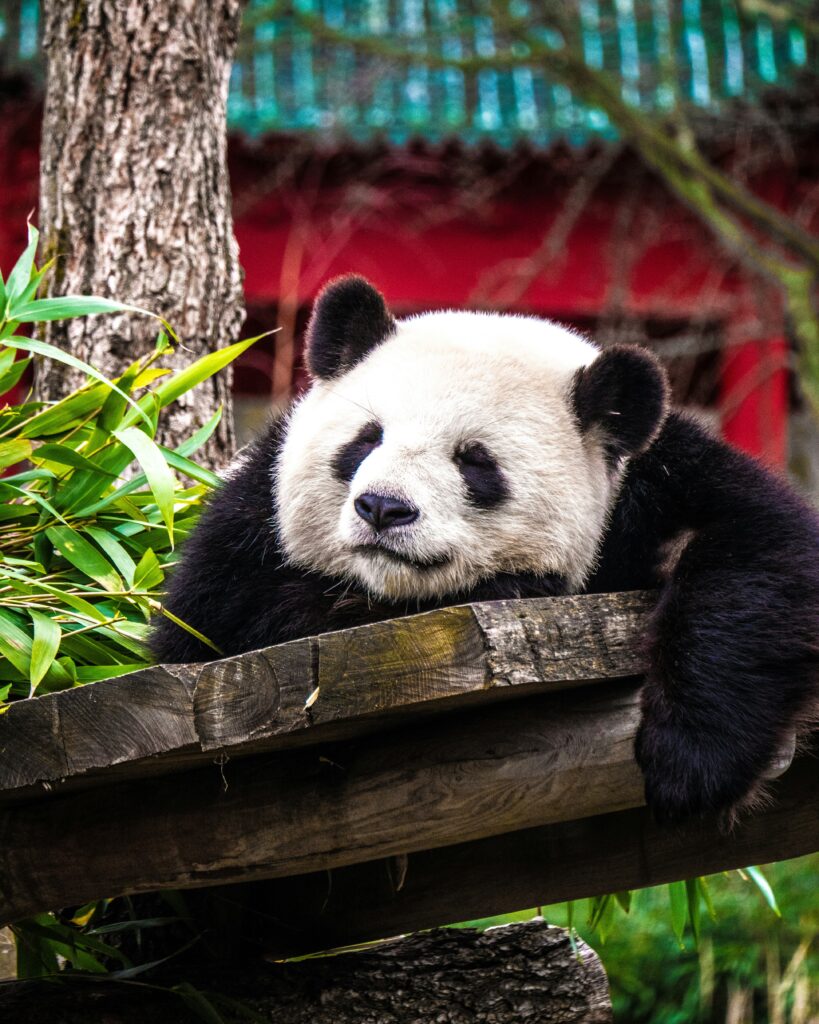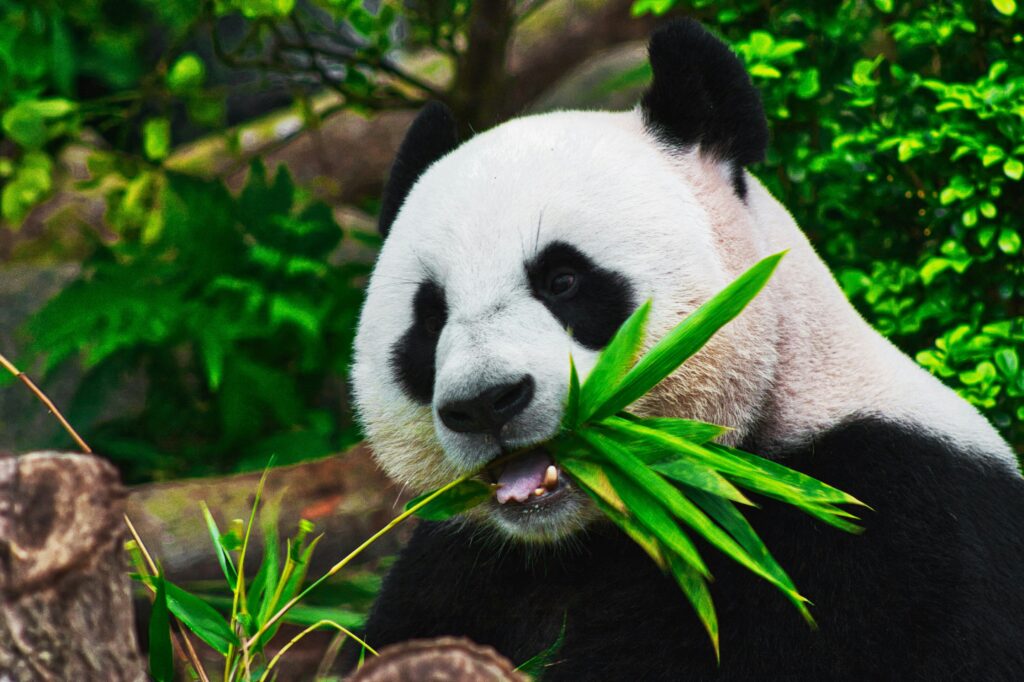Pandas are one of the most iconic and beloved animals in the world, known for their distinctive black-and-white fur and gentle demeanor. Native to China, pandas are a symbol of conservation efforts and are deeply ingrained in Chinese culture. Below is a detailed exploration of pandas, covering their biology, behavior, habitat, diet, conservation status, and cultural significance.

1. Taxonomy and Classification
- Scientific Name: Ailuropoda melanoleuca
- Family: Ursidae (bear family)
- Genus: Ailuropoda
- Species: A. melanoleuca
Pandas are mammals and belong to the order Carnivora, though their diet is primarily herbivorous. They are closely related to bears, with genetic studies confirming their place within the Ursidae family.
2. Physical Characteristics
- Size:
- Adult pandas typically weigh between 85–125 kg (187–276 lbs).
- Males are generally larger than females.
- Height:
- Standing on all fours, pandas are about 60–90 cm (2–3 ft) tall.
- On their hind legs, they can reach up to 1.8 meters (6 ft).
- Fur:
- Pandas have a distinctive black-and-white coat.
- Black fur covers their ears, eye patches, shoulders, and legs, while the rest of the body is white.
- This coloration is thought to provide camouflage in their natural habitat.
- Adaptations:
- Pandas have strong jaws and large molar teeth adapted for crushing bamboo.
- They possess a “pseudo-thumb,” an enlarged wrist bone that functions like a thumb, helping them grip bamboo stalks.
3. Habitat and Distribution
- Natural Habitat:
- Pandas are native to the mountainous regions of central China, primarily in Sichuan, Shaanxi, and Gansu provinces.
- They inhabit temperate broadleaf and mixed forests at elevations of 1,200–3,400 meters (4,000–11,000 ft).
- Climate:
- Pandas thrive in cool, moist environments with dense bamboo undergrowth.
- Range:
- Historically, pandas were found across much of southern and eastern China, but their range has significantly decreased due to habitat loss.
4. Diet and Feeding Habits
- Primary Diet:
- Pandas are primarily herbivorous, with bamboo making up 99% of their diet.
- They consume 12–38 kg (26–84 lbs) of bamboo daily to meet their energy needs.
- Bamboo Varieties:
- Pandas eat over 60 different species of bamboo, including shoots, leaves, and stems.
- Digestive System:
- Despite being classified as carnivores, pandas have a digestive system more suited to a carnivorous diet.
- They derive limited nutrients from bamboo, which is why they must eat so much of it.
- Occasional Omnivory:
- Pandas occasionally eat small mammals, birds, or carrion, but this is rare.
5. Behavior and Lifestyle
- Solitary Nature:
- Pandas are solitary animals, except during the breeding season or when mothers are raising cubs.
- Territoriality:
- They mark their territory with scent markings and vocalizations to avoid conflicts.
- Activity Patterns:
- Pandas are crepuscular, meaning they are most active during dawn and dusk.
- They spend most of their day eating and resting.
- Climbing and Swimming:
- Pandas are skilled climbers and often take refuge in trees.
- They are also strong swimmers.
6. Reproduction and Lifespan
- Mating Season:
- Pandas have a short breeding season, typically in spring (March–May).
- Gestation:
- Gestation lasts 3–5 months, but delayed implantation can occur, making it difficult to predict birth timing.
- Cubs:
- Females give birth to 1–2 cubs, though usually only one survives.
- Cubs are born blind, hairless, and weigh only 85–140 grams (3–5 ounces).
- They are entirely dependent on their mother for the first few months.
- Weaning and Independence:
- Cubs are weaned at around 8–9 months but stay with their mother for 1.5–2 years.
- Lifespan:
- In the wild, pandas live 15–20 years, while in captivity, they can live up to 30 years.
7. Conservation Status
- IUCN Red List:
- Pandas are classified as Vulnerable (as of 2021), thanks to successful conservation efforts.
- Threats:
- Habitat loss due to deforestation, agriculture, and urbanization.
- Climate change, which affects bamboo growth.
- Low reproductive rates.
- Conservation Efforts:
- China has established over 50 panda reserves to protect their habitat.
- Breeding programs in captivity have helped increase the population.
- International collaborations, such as those with zoos worldwide, have raised awareness and funding.
8. Cultural Significance
- Symbol of China:
- Pandas are a national treasure in China and are often used as diplomatic gifts, known as “panda diplomacy.”
- Global Icon:
- Pandas are a symbol of wildlife conservation and are featured in the logo of the World Wildlife Fund (WWF).
- Mythology and Folklore:
- In Chinese culture, pandas are associated with peace, harmony, and good fortune.
9. Interesting Facts
- Pandas have a unique vocalization called “bleating,” which sounds like a mix between a goat and a sheep.
- Despite their size, pandas are excellent tree climbers and can even swim.
- The panda’s black-and-white fur is thought to serve as camouflage in their snowy and rocky habitats.
- Pandas spend about 10–16 hours a day eating due to the low nutritional value of bamboo.

10. Conclusion
Pandas are not only a symbol of conservation but also a testament to the resilience of nature. While their population has seen a gradual increase due to concerted efforts, ongoing challenges such as habitat fragmentation and climate change require continued attention. By protecting pandas, we also preserve the rich biodiversity of their ecosystems, ensuring a healthier planet for future generations.

